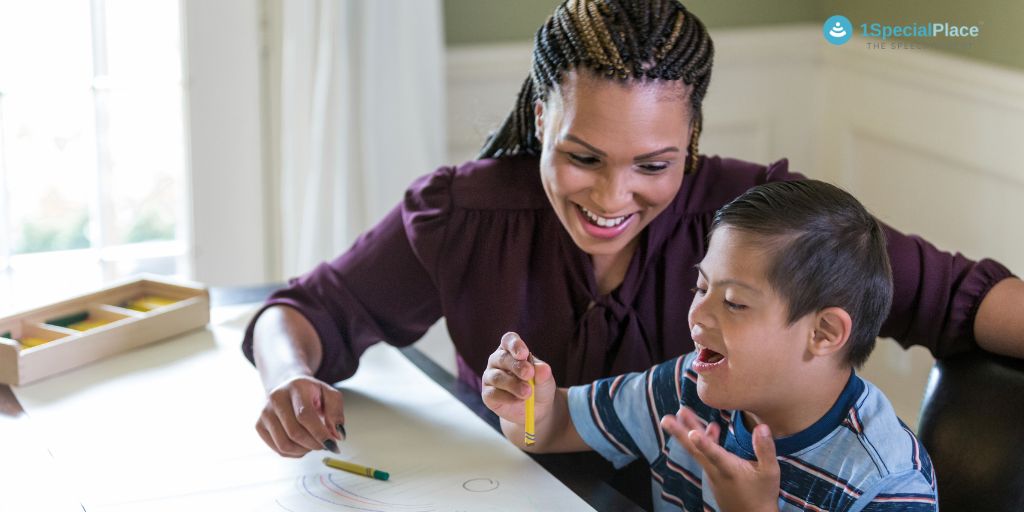
Sexual Safety of a Child with Special Needs – A Parental Guide
Sexual Safety of a Child with Special Needs – A Parental Guide
Abuse in children
Abuse in children is a widely discussed topic, so is abuse in children with disabilities. Review on the risk of violence against children with disability states that they are four times more likely to experience violence than their non disabled peers. Henceforth it becomes of prime importance for parent to teach on how they can ensure sexual safety their child.
A review conducted on 2012 indicated that children with disabilities are 3.7 times more likely than non-disabled children to be victims of any sort of violence, 3.6 times more likely to be victims of physical violence, and 2.9 times more likely to be victims of sexual violence.
Myths among parents
A common myth that parents of children with disabilities have is, the education on sexual development is not necessary since they are under the constant care and protection of the parent. Sexual development in children is a complex matter, but it can be understood very well when taught correctly.
This is not only reformative but also helps in safe guarding the child against the possibility of abuse. There is no one way to teach all children but it is to be structured for every child. Some of the ways a parent can help their children understand this is by creating awareness, a few ways are discussed below.
Private v/s Public body parts
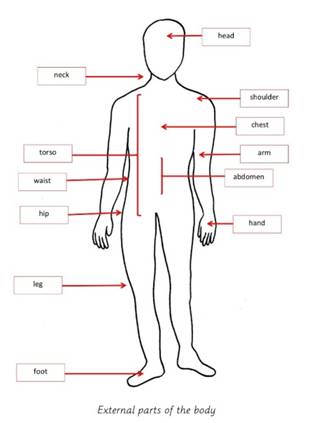
Parent as the primary caregiver can start educating their child as early as possible. This takes time and patience. The child should understand about his/her body first.
Once the child learns about the body parts, they can be taught to differentiate between private and public parts of body. Public body parts are the ones that can be touched by a family member whereas private which cannot be.
Public body parts include hand, feet, hair etc., whereas, private can include lips, thighs or parts covered by clothing.
Visual aids can be used for teaching these. For example, Green for public and Red for private parts. Something to take note when teaching the child body parts is the usage of right names instead of cookie or shame shame for the privates.
Use of incorrect names would confuse the adult they would be approaching when in need for help.
Private v/s public places
An idea of what’s private and public can be generalized to places as well. There are rooms which are private and public, this can start with teaching them about the gender and the respective bathroom signs.
Moving on parents can teach private and public rooms. The child can be taught that they can undress in a private room but not a public room. When teaching about the private room inside the house is that the child should understand it should be behind close doors and not open.
Also not in the presence of another individual other than the primary caregiver (parent or somebody parent trusts).
Children should be aware of private rooms which are in public places. For example, gym, locker room, washroom are private rooms in a school, whereas, there are dressing room in a clothing shop.
Acts involving physical proximity
Physical proximity is a way of expressing intimacy or feelings. Activities like taking help cleaning up or changing clothes is also something which involves physical proximity, where a parent or a caregiver is involved. These could include holding hands, hugging, kissing, caressing or sexual activity.
sexual safety special needs
- These are often exchanged with members of relation, friends, platonic or romantic love.
- When teaching your child about these acts the child should be aware of whom he/she could receive it and whom they shouldn’t. For a better understanding making the child aware of relatives, neighbors, friends and strangers is good.
- These can be taught with the decreasing order of the closeness he/ she shares with them.
- Among family the child can be taught from whom and where its acceptable to receive/ give hugs or kisses. For example a neighbor cannot be kissing the child whereas a parent can.
This is where the knowledge of public and private parts come in handy.
When your child needs help in changing clothes or cleaning up after soiling clothes. The child should know who they can approach or from who they can accept help. For example, gardener is a familiar person for a child but the child should not approach him, instead it should be the parent or caregiver.
Teaching consent
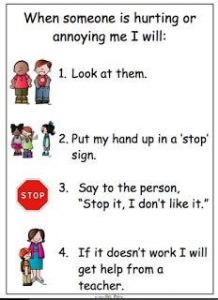
Consent is nothing but the permission for something to happen. With the knowledge of the above, it makes it easy for the child to understand that he or she can give permission or withdraw it.
- Various instances can be taught to where they can say no. For example, they should say no if the neighbor caresses them in-appropriately.
- If the child has difficulty in communicating – they can be taught on how to use alarming device. This can be attached to their body or kept in close proximity to make sound.
Three things the child should know of is NO – GO – TELL.
NO – GO – TELL
- NO – Saying NO when something inappropriate happens.
- GO – Moving away from the person and,
- TELL – telling a parent, caregiver or nearby adult of the account of what happened.
Parents as primary caregivers are the best role models for teaching their children. This not only empowers the child but also the helps the parent in protecting their children. As the child grows there would be changes physically and mentally, a knowledge about the body and the autonomy regarding it is important. This aids the transition through different phases of the growth easy for parent as well as the child. Hence, ensuring sexual safety of children.
- Tips for Parents of Children who Stutter - May 26, 2021
- Sexual Safety of a Child with Special Needs – A Parental Guide - January 24, 2021

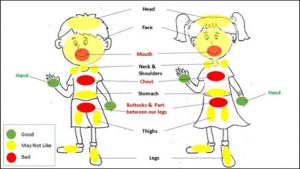
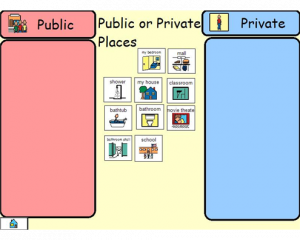
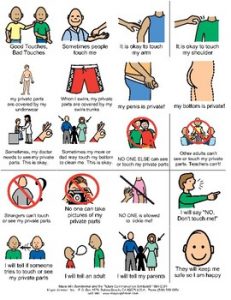
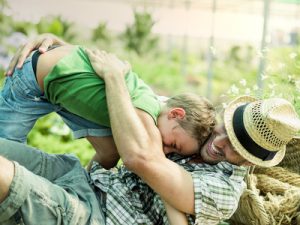
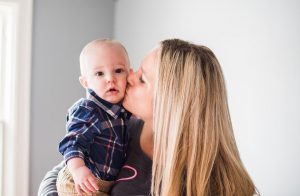
Leave a Comment
(17 Comments)
Absolutely an excellent piece of advice. We should make it compulsory in all schools… In our school we have.
Yes, you are right. including this in the school curriculum is important. This helps the parent is gaining the confidence that the child is independent and is able to protect themselves.
Very Informative ??
Thank you, these are important for parents as well as educators to teach their children.
Thankyou. This article is very clear, informative and uselful!
These information can be helpful for a lot of parents in ensuring their childs safety. Because abuse can happen at any place. It can be inside the house as well as outside. Practicing this since the childhood is extremely good.
Ur article is good and informative
Really appreciated
Thank hima
thank you for your review. This is to tell about the importance of how teaching sexual safety during the development can be a huge relief for the parents.
A must read for all and to educate children on the same. Good one
Irrespective of age and gender a child should be educated about this during different stages of development. Hence a must read like you mentioned and importance should always be stressed.
This is a wonderful initiative. We often tend to ignore sexual safety of children when the onus is on their sheer academic or extra curricular excellence. Oflate, with the introduction of the POCSO Act (2012) and the dedicated efforts of Child Welfare Committees (CWC) and Justice Juvenile Boards (JJB) in each district, the sexual safety of children are being addressed. But when it comes to children with disabilities, this is ignored. The system is also confused as to which concerned professional should address sexual safety in children with special needs. The parents must be severely sensitised and trained. All possible taboos must be eradicated. I might as well say De-Indianization is the need of the hour but this is going to make me seem like an anti-national. I am referring to the eradication of blind beliefs which are severely evident in India. Let’s hope this can be a crucial wake up call for a better tomorrow.
Treat everyone equally in the sense means they should and they have the right to know about the Do’s and Don’ts
Kudoos to the Blogger Hima
Thanks for sharing this info Hima.!
This is something everyone has to look into to ensure child safety.!
Thank you for sharing this!
It hurts to say that we have to teach children these things for the sake of their safety and not just for academics.
But statistics on sexual abuse and violence against children is at an alarming level, so removing myths from the minds of parents as well as children and replacing them with precautionary measures and to teach them WHEN THINGS ARE CODE RED can be considered as one of the most effective yet simple way to make them understand these complicated things.
When it comes to differently abled children, special care is needed which should begin from home. If abuse arises within their home, other alternatives must be in effect to rescue them asap.
Thanks bestie!, for letting me know the details on spreading care towards differently abled children. Hoping to be aparent myself in future, i urge myself to be responsible to make aware these things to mine as well as the children and adults around me BECAUSE WE KNOW BETTER!
Well put up and good resources.
Thank you for your comment. We as an institution are always working towards empowering the child and the parent. Hence, sharing this becomes very important to us.
Categories
Recent Posts